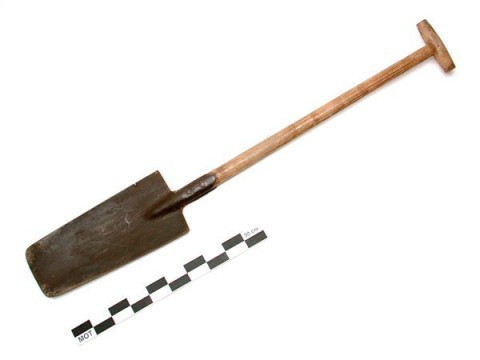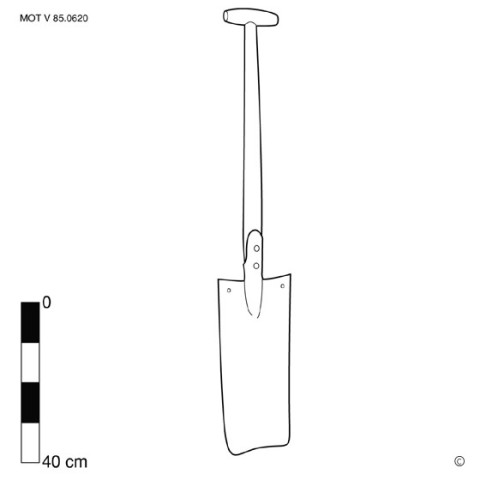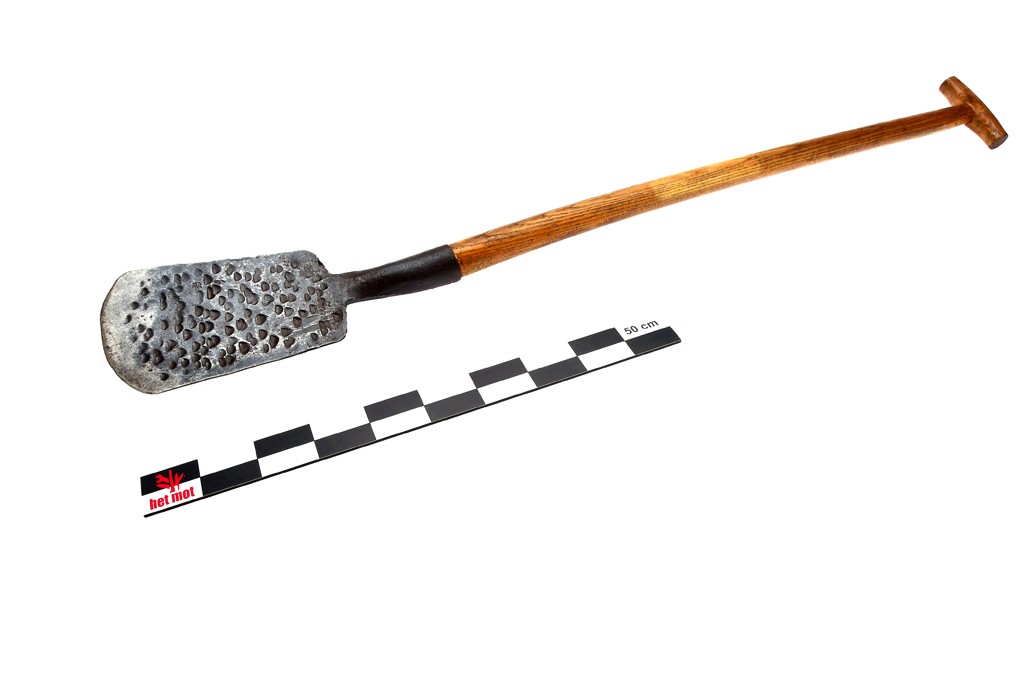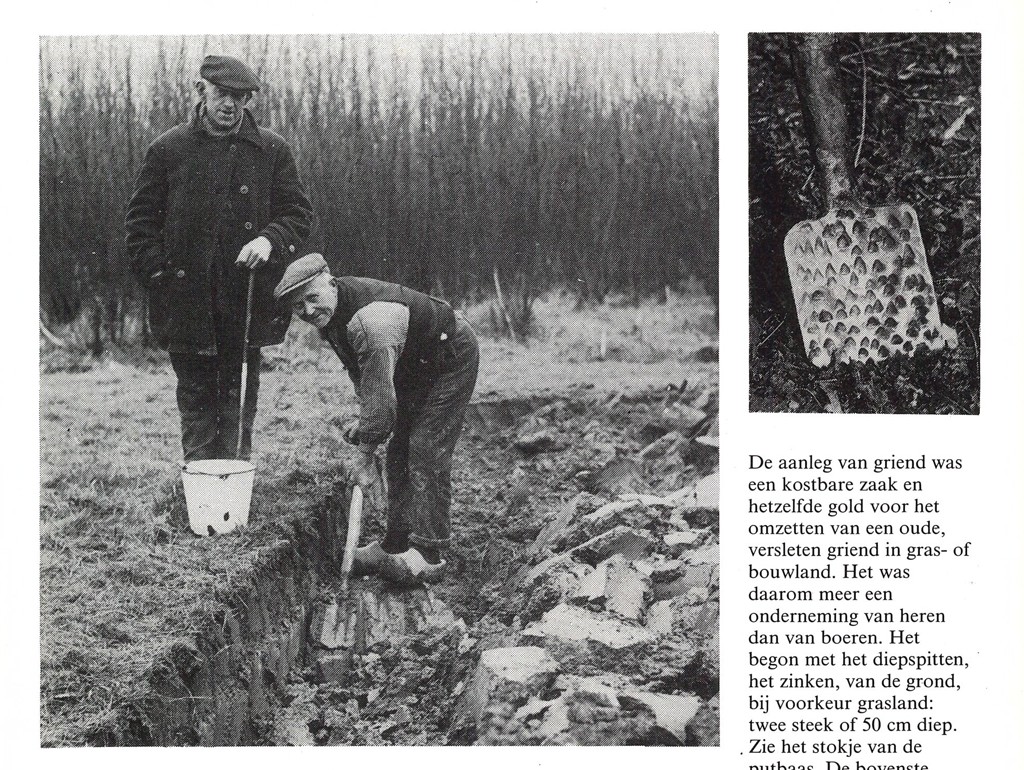Spade
Spade with long (approx. 30-40 cm) and narrow (approx. 10-17 cm) blade that is slightly curved in relation to a T or D handle (70-95 cm). To make it easier to penetrate into the ground, the edge of the blade is often slightly curved and usually narrows a few centimeters downwards (1). The top is sometimes provided with a footrest to prevent damage to the user's shoe. To prevent the clay soil from sticking to the blade, the latter is dipped into a bucket of water before each stitch; sometimes dents are punched in the concave side of the blade with a hammer (2).
In the 19th century, a wooden, studded blade was also used in light soil in addition to the steel spade (3).
Exceptionally, an extension piece is sometimes attached to the top of the blade of the garden spade instead of the sting spade in order to dig deeper (4).
A spade is used for digging or digging deep, i.e. working the soil two, three or four stitches deep (5). It is also used to extract peat or to transplant plants or crops with a taproot. Osiers use the stump to pierce the roots of dead stumps.
Distinguished from the spade tool which serves to harvest madder (6). It is also long and narrow but curved lengthwise.
See also chaquitaclla and peat spade. [MOT]
(1) LOGAN: 38 shows a spade that runs wide and is used to dig ditches and channels. Sometimes the sides of the spade are slightly hollowed out (CORDIER in DAVID 1975a: 60).
(2) WESTENDORP, VAN 'T HOOG & TUINZING: 102.
(3) Eg. VAN AELBROECK uit DAVID 1975a: 52.
(4) SCHWERZ uit DAVID 1975a: 35 en LINCKE uit DAVID 1975a: 97.
(5) See the article Spade cultivation in Flanders.
(6) VERPLANCKE in DAVID 1975a: 70.



MOT V 2025.0275

WESTENDORP A., VAN 'T HOOG A.D. & TUINZING W.D.J. 1985, Het vlechten van ovale manden met teen. Een handleiding, aangevuld met tal van bijzonderheden over mandenmakerij, griendteelt en een lijst van vaktermen in vier talen, IJsselstein: 102.
